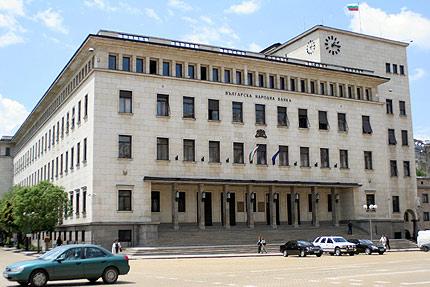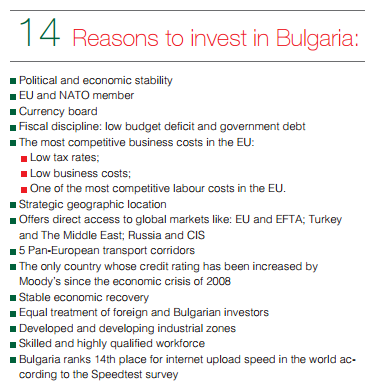- Home
- Services
- BCCBI gives services to members of the chamber only
- Legal and Accounting
- Administration and Translation
- Events and Delegations
- Business Consulting
- Public Relations
- Networking and Partner Check-ups
- Оthers
- A Taste of Bulgaria
- Bulgarian Eco Paths for Tourism
- BCCBI recommends
- The Seven Rila Lakes
- Bulgarian Cherry Festival
- Tsarevets - Veliko Tarnovo
- Borovec
- Nesebar
- Sozopol
- Fire dancing nestinars
- Bulgaria is the Place
- Bulgaria - A discovery to share
- YOU THINK YOU KNOW BULGARIA?
- Varna and Burgas (Video in Hebrew)
- You can’t help falling in love with her at first sight
- Black Sea - Bulgaria
- The Magic of the Bulgarian Rose
- News & Events
- Business Opportunities
- About Us
- Contact us
- Home
- Services
- BCCBI gives services to members of the chamber only
- Legal and Accounting
- Administration and Translation
- Events and Delegations
- Business Consulting
- Public Relations
- Networking and Partner Check-ups
- Оthers
- A Taste of Bulgaria
- Bulgarian Eco Paths for Tourism
- BCCBI recommends
- The Seven Rila Lakes
- Bulgarian Cherry Festival
- Tsarevets - Veliko Tarnovo
- Borovec
- Nesebar
- Sozopol
- Fire dancing nestinars
- Bulgaria is the Place
- Bulgaria - A discovery to share
- YOU THINK YOU KNOW BULGARIA?
- Varna and Burgas (Video in Hebrew)
- You can’t help falling in love with her at first sight
- Black Sea - Bulgaria
- The Magic of the Bulgarian Rose
- News & Events
- Business Opportunities
- About Us
- Contact us

Why to Invest in Bulgaria (2)
Political and business stability


- Bulgaria is a member of the European Union, NATO and WTO
- The stability of the currency is supported by the currency board, pegging the Bulgarian lev to the euro at the level of 1.96
- Bulgaria has one of the lowest government debts in the European Union (18.9 % of GDP) and one of the lowest budget deficits (-1.5%) as of 2013
Low cost of doing business 

- Bulgaria has the most favourable tax regime in Europe. Corporate income tax rate is 10%, the lowest in the EU. Personal income tax is 10 %, flat rate. Industries in high-unemployment areas are granted 0% tax rate
- There is a 2-year VAT exemption for imports of equipment for investment projects over €5 million, creating at least 50 jobs
- Depreciation time for computers and new manufacturing equipment is 2 years
- 5% withholding tax on dividends and liquidation quotas (0% for EU tax residents)
- Bulgaria has one of the most competitive costs of labor in Central and Eastern Europe
- Favorable office rents and low cost of utilities. Bulgarian cost of electricity for industrial users is 70% of the European average
Strategic location


Located at the heart of the Balkans, Bulgaria is a strategic logistics hub. Ease of transportation of cargo is provided by
- Five Pan-European corridors ( IV, VII, VII, XI, X), which pass through the country
- Transport program TRACECA, which connects Europe with Caucasian and Central Asian region
- Four major airports: Sofia, Plovdiv, Bourgas and Varna
- Two main seaports: Varna and Bourgas
- Numerous ports at the Danube River
Access to markets 

Due to its location Bulgaria provides direct access to the following key markets:
- European Union – zero tariff market with population of 500 million
- CIS – still not well penetrated market with a high potential
- Turkey – zero tariff market of near 80 million population
- Middle East – a market with high purchasing power
- North African market
Human resources


- Work force is well educated, highly skilled and multilingual
- 62.2 % of the total population is in working age (appr. 4.6 million)
- 60 000 students annually graduate from 51 universities
- 98% of the high school students study a foreign language (usually English) and 73% study a second language (mainly German, French, Spanish, Russian)
- 94% of the schools have Internet access
Published in
Why to Invest in Bulgaria
Search site
Business opertunites
-
Read more...Plana Heights ProjectThe initiation and creation of an architecturally enchanting spot
-
Read more...AgriTech Israel 2018 Conference and Exhibition / Конференция и Изложение "Agritech Israel 2018"AgriTech Israel 2018 Conference and Exhibition / Конференция и Изложение…
Contact us
*
Binational Chamber of Commerce Bulgaria Israel

Contacts
Mail: office[at]bccbi.bg
Phone: +359 2 9549514
Fax: +359 2 9549311
Mobile: +359 882 515206
Address: bul. Bulgaria № 90, fl. 2, Sofia 1404, Bulgaria






